Quando se trata de ligas de alto desempenho usadas em ambientes extremos, Haynes 188 Pó se destaca como uma escolha líder. Seja você trabalhando em aeroespacial, geração de energia ou qualquer outra indústria que exija materiais que possam suportar calor extremo, o Pó de Haynes 188 é conhecido por sua resistência ao calor, resistência à oxidação e resistência à fluência. Mas o que torna este pó verdadeiramente único e por que você deve considerá-lo para seu próximo projeto de alta temperatura?
Este guia completo irá levá-lo através de tudo o que você precisa saber sobre o Pó de Haynes 188. Exploraremos sua composição, propriedades, aplicações e até mesmo o compararemos com outros pós metálicos populares. Então, aperte os cintos e vamos mergulhar no mundo das superligas à base de cobalto.
Visão geral do Pó de Haynes 188
O Pó de Haynes 188 é uma superliga à base de cobalto conhecida por seu excelente desempenho em altas temperaturas. É amplamente utilizado em ambientes onde a resistência à oxidação e a estabilidade térmica são cruciais. A forma em pó do Haynes 188 o torna ideal para a fabricação aditiva, permitindo a criação de formas e componentes intrincados com facilidade.
Atributos chave:
- Excelente resistência à oxidação até 1095°C (2000°F)
- Boa resistência a altas temperaturas
- Resistência superior à fadiga térmica
- Excelente resistência à fluência e oxidação
- Ideal para aeroespacial, turbinas a gás e revestimentos de câmaras de combustão
Usos comuns:
- Componentes aeroespaciais como combustores e pós-combustores
- Geração de energia aplicativos
- Fornos industriais e revestimentos de barreira térmica
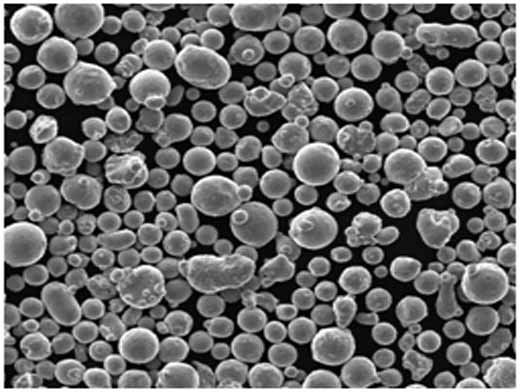
Composição do Pó de Haynes 188
A chave para entender por que o Pó de Haynes 188 tem um desempenho tão bom reside em sua composição. Esta liga à base de cobalto é projetada especificamente para resistir a condições ambientais extremas.
| Elemento | Composição (%) |
|---|---|
| Cobalto (Co) | Equilíbrio |
| Cromo (Cr) | 22.0 |
| Níquel (Ni) | 22.0 |
| Tungstênio (W) | 14.0 |
| Lantânio (La) | 0.03 |
| Carbono (C) | 0.10 |
| Silício (Si) | 0.35 |
| Manganês (Mn) | 1.25 |
O que torna esta composição especial?
- Cromo aumenta a resistência do material à oxidação e corrosão.
- Níquel melhora a estabilidade geral da liga em altas temperaturas.
- Tungstênio adiciona resistência, particularmente em aplicações de alta temperatura.
- Lantânio aumenta a resistência à oxidação e contribui para a longevidade da liga.
Cada elemento é estrategicamente incluído para dar ao Pó de Haynes 188 suas capacidades de alto desempenho, especialmente em ambientes extremos.
Características do Pó de Haynes 188
Agora que sabemos o que está dentro do Pó de Haynes 188, vamos analisar suas características físicas e mecânicas.
| Propriedade | Valor |
|---|---|
| Faixa de fusão | 1330°C – 1410°C |
| Densidade | 8,90 g/cm³ |
| Resistência à tração à temperatura ambiente | 895 MPa (130 ksi) |
| Limite de escoamento à temperatura ambiente | 430 MPa (62 ksi) |
| Alongamento | 45% |
| Dureza (Rockwell C) | 24 |
| Coeficiente de expansão térmica | 12,8 μm/m°C (até 800°C) |
| Condutividade térmica | 10,7 W/m-K |
| Resistência à oxidação | Até 1095°C |
Características notáveis:
- Alta resistência e ductilidade: Oferece resistência mecânica superior combinada com excelente ductilidade, tornando-o ideal para peças sujeitas a alta tensão.
- Estabilidade térmica: Suporta temperaturas extremas sem perder a sua integridade mecânica.
- Resistência à fluência: Excelente resistência à fluência garante que a liga mantenha a sua forma sob exposição prolongada ao calor.
Aplicativos de Haynes 188 Pó
Graças às suas notáveis propriedades, o Pó Haynes 188 é uma escolha de referência em indústrias onde a resistência ao calor e a proteção contra a oxidação são primordiais. Vamos explorar as indústrias e aplicações específicas onde esta superliga realmente se destaca.
| Aplicativo | Detalhes |
|---|---|
| Aeroespacial | Câmaras de combustão, pós-combustores, bocais de escape, turbinas a gás |
| Geração de energia | Lâminas de turbinas a gás, caminhos de gases quentes, revestimentos de combustão |
| Fornos industriais | Componentes expostos a altas temperaturas e ambientes oxidativos |
| Manufatura aditiva (impressão 3D) | Produção de formas complexas para aplicações aeroespaciais e de geração de energia |
| Processamento químico | Trocadores de calor, reatores e outros equipamentos em ambientes corrosivos |
Na indústria aeroespacial, o Pó Haynes 188 é comumente usado na fabricação de combustores e seções de turbinas de motores de aeronaves. As usinas de geração de energia também dependem fortemente desta superliga devido às suas excelentes propriedades de resistência ao calor.
Manufatura aditiva:
Um dos principais benefícios do Haynes 188 em forma de pó é a sua adaptabilidade à manufatura aditiva ou impressão 3D. Isso permite a produção de peças intrincadas e de alto desempenho com o mínimo de desperdício, tornando-o econômico e ecologicamente correto.

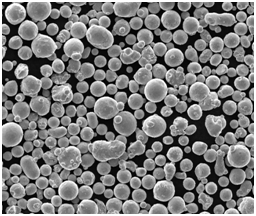
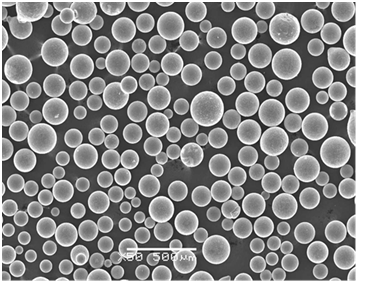
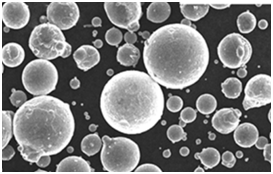

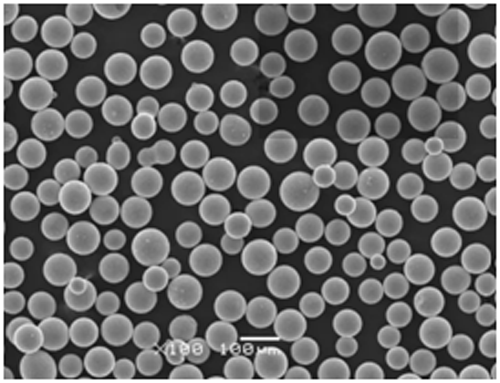
Modelos Populares de Pó Metálico: Pó Haynes 188 e Alternativas
Vamos comparar Haynes 188 com outros modelos populares de pó metálico comumente usados em aplicações de alta temperatura.
| Pó metálico | Composição | Propriedades Notáveis | Formulários |
|---|---|---|---|
| Haynes 188 | Co, Cr, Ni, W, La | Alta resistência ao calor, resistência à oxidação | Aeroespacial, geração de energia, fornos |
| Inconel 625 | Ni, Cr, Mo, Nb | Excelente resistência à corrosão e oxidação | Marinha, processamento químico, reatores nucleares |
| Inconel 718 | Ni, Cr, Mo, Fe | Alta resistência, fadiga e resistência à fluência em temperaturas elevadas | Motores a jato, naves espaciais, turbinas |
| Haynes 230 | Co, Cr, W, Mo | Boa estabilidade térmica, resistência à oxidação até 1200°C | Aeroespacial, processamento químico, usinas de energia |
| Haynes 282 | Ni, Cr, Mo, Ti | Excelente soldabilidade e estabilidade térmica | Turbinas a gás, revestimentos de combustão |
| Hastelloy X | Ni, Cr, Fe, Mo, Co | Alta resistência à oxidação e boa conformabilidade | Componentes de motores a jato, aplicações em fornos |
| Carboneto de Tungstênio (WC) | W, C | Dureza extrema, alto ponto de fusão | Ferramentas de corte, aplicações resistentes ao desgaste |
| Níquel 625 em pó | Ni, Cr, Mo, Nb | Alta resistência à corrosão, soldabilidade | Processamento químico, indústrias marítimas |
| Stellite 6B | Co, Cr, W, Mo | Excelente resistência ao desgaste, tenacidade | Ferramentas de corte, lâminas de serra, peças de desgaste |
| Cromo Cobalto | Co, Cr | Alta resistência ao desgaste, biocompatibilidade | Implantes médicos, aplicações odontológicas |
Vantagens do Pó Haynes 188
O Pó Haynes 188 tem muitas vantagens em relação a outros pós metálicos de alto desempenho. Vamos dar uma olhada mais de perto no que o torna a escolha superior em condições extremas.
1. Resistência a Altas Temperaturas
Comparado a outras ligas, o Haynes 188 se destaca em manter sua resistência em calor extremo. Enquanto alguns materiais amolecem em altas temperaturas, o Haynes 188 pode suportar operação contínua até 1095°C.
2. Resistência à Oxidação
O alto teor de cromo e níquel na liga confere-lhe excelente resistência à oxidação, mesmo em ambientes extremos. Isso é crucial em indústrias como a aeroespacial e a geração de energia, onde os componentes são expostos a atmosferas ricas em oxigênio em altas temperaturas.
3. Resistência à Fluência
Quando comparado a outras superligas como Inconel 625 ou Hastelloy X, o Haynes 188 mostra melhor resistência à fluência. Isso significa que a liga mantém sua integridade estrutural mesmo sob estresse de longo prazo em temperaturas elevadas.
4. Versatilidade na Manufatura Aditiva
Como pó, o Haynes 188 é especialmente adequado para impressao 3D, permitindo a produção de peças complexas e de alta precisão com o mínimo de desperdício.
Limitações de Haynes 188 Pó
Claro, nenhum material é perfeito. Vamos explorar algumas das possíveis limitações do Pó Haynes 188.
1. Custo
Uma das principais desvantagens do Pó Haynes 188 é o seu custo. A presença de cobalto e tungstênio o torna relativamente mais caro do que outras superligas como o Inconel 718. No entanto, os benefícios de longevidade e desempenho geralmente justificam o preço mais alto.
2. Soldabilidade
Embora o Haynes 188 possa ser soldado, ele não oferece o mesmo nível de soldabilidade que algumas outras ligas à base de níquel
como o Inconel 625. Isso pode ser um desafio em aplicações que exigem muito trabalho de soldagem.
3. Resistência à Corrosão Limitada
Embora tenha um desempenho excepcionalmente bom em altas temperaturas, o Haynes 188 não é tão resistente à corrosão quanto outras ligas como o Hastelloy X, particularmente em ambientes marinhos ou altamente ácidos.
Especificações, Tamanhos, Graus e Padrões do Pó Haynes 188
Aqui estão algumas das principais especificações e padrões associados ao Haynes 188 Pó.
| Especificação | Detalhes |
|---|---|
| Densidade | 8,90 g/cm³ |
| Faixa de fusão | 1330°C – 1410°C |
| Tamanhos Padrão | Disponível em uma variedade de tamanhos de malha para impressão 3D |
| Normas ASTM | ASTM F75, ASTM B637 |
| Graus Típicos | AMS 5608, AMS 5801, AMS 5943 |
| Padrões aplicáveis | ISO 9001:2015, AS 9100D, NADCAP |
Fornecedores e Detalhes de Preços do Pó Haynes 188
Ao obter o Pó Haynes 188, é importante procurar fornecedores de renome para garantir que você está obtendo um produto de alta qualidade. Abaixo estão alguns fornecedores conhecidos, juntamente com uma faixa de preço estimada.
| Fornecedor | Faixa de preço (USD/kg) | Região | Certificação |
|---|---|---|---|
| Tecnologia Carpenter | $150 – $300 | EUA | ISO 9001, AS 9100, NADCAP |
| Höganäs | $180 – $320 | Europa, Global | ISO 9001, AS 9100 |
| Praxair | $170 – $280 | EUA, Global | ISO 9001, NADCAP |
| EOS | $200 – $350 | Alemanha, Global | ISO 9001 |
| Kennametal | $160 – $310 | EUA | AS 9100, ISO 14001 |
Os preços variam com base em fatores como pureza, tamanho da partícula, e certificações do fornecedor. Pedidos maiores geralmente recebem descontos, e serviços adicionais como mistura personalizada ou dimensionamento de malha podem aumentar o preço.
Prós e Contras do Pó Haynes 188
Ao decidir se Haynes 188 Pó é o material certo para o seu projeto, é importante avaliar seus prós e contras.
| Prós | Contras |
|---|---|
| Excepcional resistência ao calor e oxidação | Relativamente caro em comparação com outros |
| Forte em altas temperaturas | Resistência à corrosão limitada |
| Resistente à fluência | A soldabilidade não é tão fácil quanto em outras ligas |
| Ideal para manufatura aditiva | Requer manuseio e processamento especializados devido ao custo |
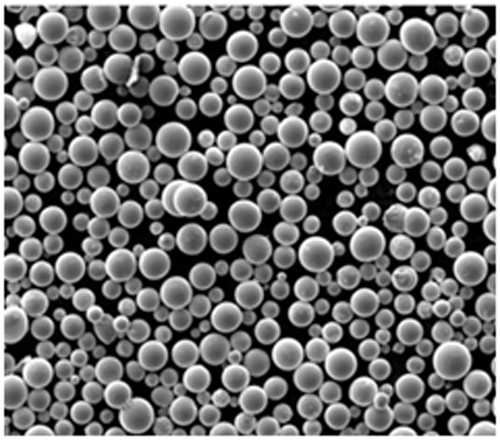
perguntas frequentes
Aqui está uma seção de perguntas frequentes para responder a algumas das perguntas mais comuns que as pessoas têm sobre o Pó Haynes 188.
| Pergunta | Resposta |
|---|---|
| Para que serve o Pó Haynes 188? | É usado em aplicações aeroespaciais, geração de energia e fornos industriais, principalmente para componentes de alta temperatura. |
| Como ele se compara ao Inconel 625? | O Haynes 188 oferece melhor resistência à fluência em altas temperaturas, enquanto o Inconel 625 tem resistência à corrosão superior. |
| O Pó Haynes 188 pode ser impresso em 3D? | Sim, o Pó Haynes 188 é comumente usado na manufatura aditiva para peças complexas e resistentes ao calor. |
| O Pó Haynes 188 é caro? | Sim, devido à sua composição (alto teor de cobalto e tungstênio), é geralmente mais caro do que outras superligas. |
| Qual temperatura o Haynes 188 pode suportar? | Pode suportar temperaturas de até 1095°C (2000°F), tornando-o adequado para ambientes extremos. |
| O Haynes 188 é fácil de soldar? | Embora possa ser soldado, não é tão fácil de soldar quanto outras ligas à base de níquel, como o Inconel 625. |
| Onde posso comprar o Pó Haynes 188? | Você pode comprá-lo de fornecedores como Carpenter Technology, Höganäs e EOS. Os preços variam dependendo do fornecedor e do tamanho do pedido. |

